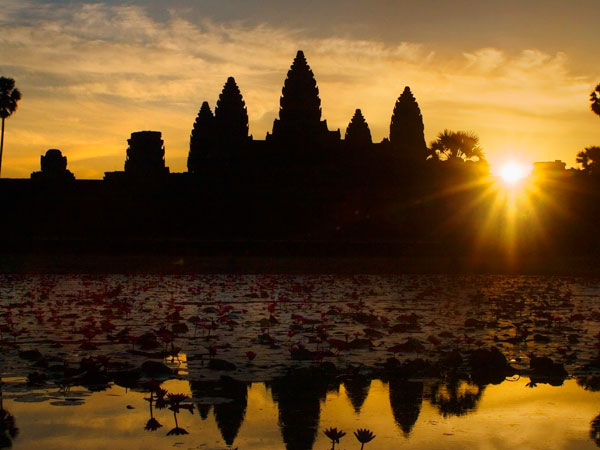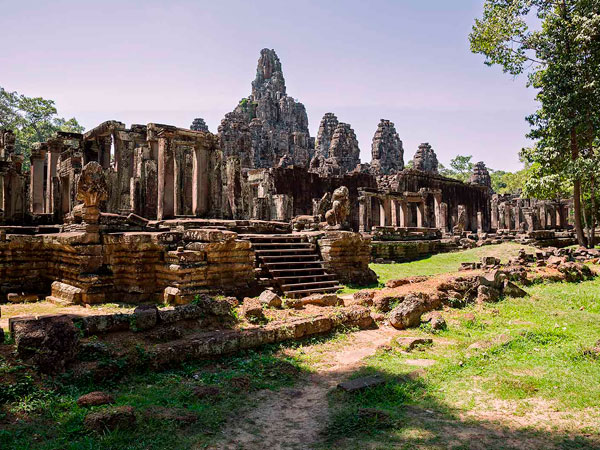Location: 1 km east of Angkor Thom
Construction Period: Mid 12th - Early 13th century C.E.
Religion: Buddhist
Built by: King Jayavarman VII
Building Style: Bayon
Best Time to Visit: Early morning, when it is not as crowded
Ta Promh Temple is a very popular feature of the typical Angkor tour because it is the only major stop which has not been fully reclaimed from the jungle. Many of the walls and structures have been smothered by huge silk-cotton trees and strangler figs, which grow over, around and even through the ancient stone blocks, in some cases holding them together and, in others, causing their collapse.
Unlike any of the other popular Angkor temples, Ta Prohm really gives you the feeling of discovering something hidden and truly ancient, giving you a real Tomb Raider or Indiana Jones vibe. In fact, this was used as a location during the filming of the 2001 movie Tomb Raider and, while other Angkor temples featured were digitally altered, Ta Prohm’s appearance was largely unchanged.
History of Ta Prohm
Ta Prohm Temple was actually a monastery – one of King Jayavarman VII's first major temple projects from the 12th-13th century, which was dedicated to his mother. It is estimated that this vast, 600-room structure and the surrounding area once had a population of over 70,000 people. The temple is 145 metres by 125 metres, and was home to high priests, monks, assistants, dancers and labourers. It controlled a great wealth of jewels and gold, as well as an estimated 3,000 nearby villages.
The temple itself contains a maze of courtyards and galleries, and it is well worth spending some time to explore its many dark corridors. Some walls and doorways of the ancient buildings have been left overgrown and gripped by huge trees and other foliage. Flocks of parrots in the trees add to the atmosphere, and give you the feeling of discovering a temple lost in the jungle. With this image in mind, it is not hard to imagine what the French naturalist Henri Mouhot must have felt when he ‘discovered’ the temple in 1860.
Ta Prohm Temple Design
Ta Prohm is similar in general design to the temples of Preah Khan and Banteay Kdei, which were also built by Jayavarman VII at a later date. Preah Khan was dedicated to Jayavarman VII’s father. Compared to Angkor Wat and Angkor Thom, Ta Prohm Temple has relatively few bas-reliefs, including one which some believe resembles a stegosaurus, but is more likely to be a rhinoceros or boar on a leafy background.
This is an excellent example of the monastic complex-style temples and, thanks to a wooden walkway built around the compound, it is quite easily accessed and explored. The dramatic tree roots covering large parts of the buildings make it a very popular place, particularly with photographers. Naturally, this means that it can sometimes be as crowded as Angkor Wat or Bayon Temple, so some patience is necessary if you want the full ‘jungle explorer’ effect.














